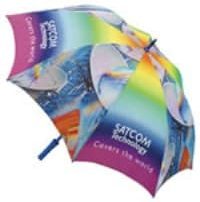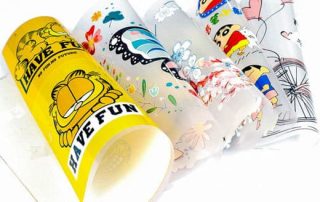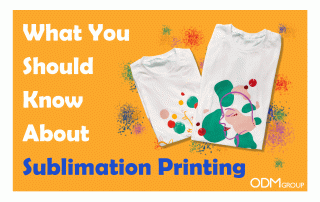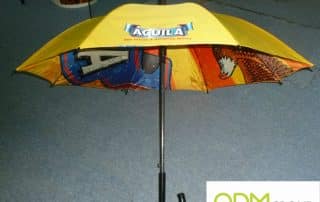Promotional products play a crucial role in establishing brand identity and creating lasting impressions. Businesses often turn to various printing techniques to make these products stand out. Among them, heat press printing has emerged as one of the most popular methods.
In this blog, we will explore the fascinating world of heat press printing, its process, its benefits, and why it has become the go-to choice for printing promotional products.
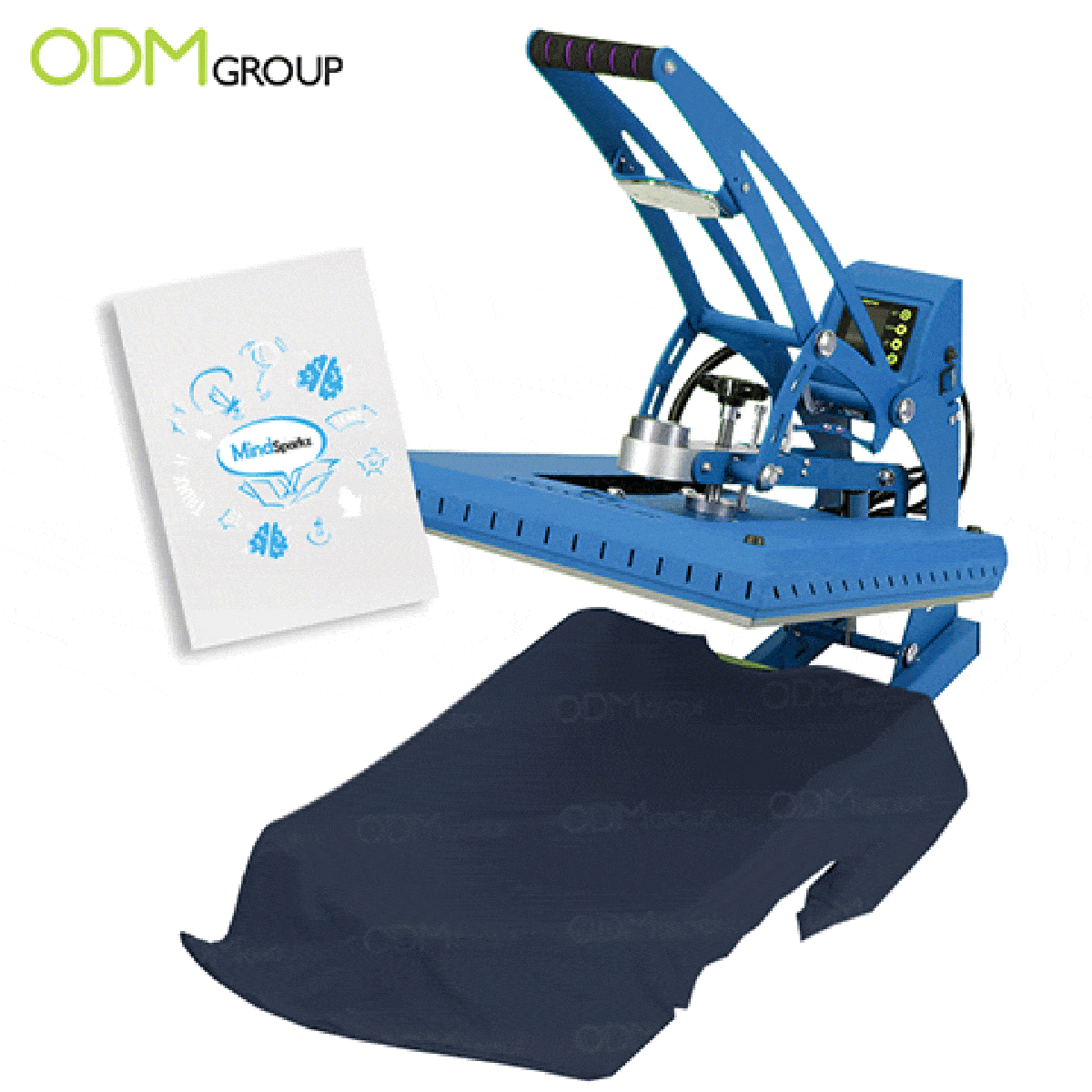
What is Heat Press Printing?
Heat press, also known as heat transfer printing, is a technique that involves applying heat and pressure to transfer a design or image onto a substrate. It utilizes a heat press machine, which uses controlled heat and pressure to bond the design onto the material’s surface.
The design is typically printed onto a special heat-transfer vinyl or paper and then positioned on the promotional product before being subjected to the heat press.
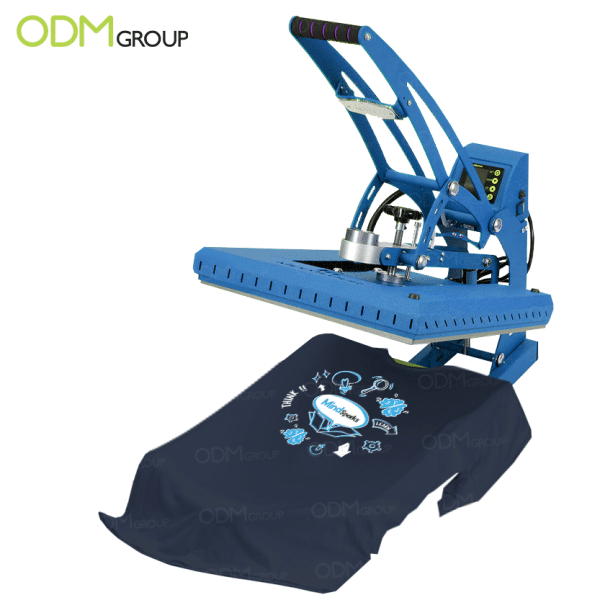
This printing method is often used for personalized t-shirts, hats, bags, and other promotional items. It also applies to print graphics and designs onto diverse surfaces such as ceramics, metal, and plastic. Signage, banners, and other printed media are also produced with heat transfer printing.
Unleashing the Power of Heat Press Printing
Heat transfer printing has gained its reputation as one of the best printing methods for promotional products for several compelling reasons. This versatile and efficient technique offers a range of benefits that elevate the customization and overall quality of promotional items.
Let’s delve into the key reasons why heat press printing stands out among other printing methods in the industry.
1. Impeccable Customization
Heat press printing provides unparalleled customization options for promotional products. Whether it’s a company logo, a catchy slogan, or an intricate design, heat press allows businesses to bring their vision to life with remarkable precision.
The controlled heat and pressure applied during the transfer process ensure that the design adheres flawlessly to the material, resulting in a professional and eye-catching finish. With heat press printing, businesses can create unique and personalized promotional products that truly represent their brand identity.
2. Versatility Across Various Materials
One of the significant advantages of this method is its compatibility with a wide range of materials. It can seamlessly adhere to different surfaces, from apparel like promotional t-shirts, hoodies, and caps to items like custom bags, mugs, and branded keychains.
This versatility allows businesses to expand their promotional product offerings and cater to diverse audiences. The ability to customize various materials with ease makes heat press a go-to method for achieving consistent and professional branding across multiple product types.
3. Exceptional Durability
Promotional products are meant to withstand regular use and continue promoting a brand for an extended period. Heat press printing is durable, ensuring the design remains intact even after repeated washing or frequent handling.
The combination of heat, pressure, and specialized inks creates a strong bond between the design and the material, resulting in vibrant prints that can withstand the test of time. Using this printing technique, businesses can confidently distribute promotional products that maintain their visual appeal and messaging, enhancing brand recognition and recall.
4. Vibrant Colors and High Resolution
Heat transfer enables businesses to achieve vibrant and detailed designs on promotional products. The process ensures the accurate transfer of colours, resulting in vivid and eye-catching prints.
Whether a simple logo or a complex artwork, this can reproduce intricate details with exceptional clarity. This level of precision allows brands to make a strong visual impact, effectively capturing the attention of recipients and reinforcing brand messaging.
5. Efficiency and Cost-Effectiveness
In the fast-paced marketing world, time and cost efficiency are crucial factors. Heat press printing offers a streamlined production process for quick turnaround times.
With the right setup and equipment, businesses can efficiently produce large quantities of promotional products without compromising quality. Moreover, this method eliminates additional steps like colour separation or setup costs, making it a cost-effective option for small to medium-sized print runs.
The Process of Heat Transfer Printing
Heat transfer is a four-step process that combines heat and pressure to transfer designs onto various materials, resulting in high-quality prints that leave a lasting impression. Let’s dive into the key steps involved in heat press printing.
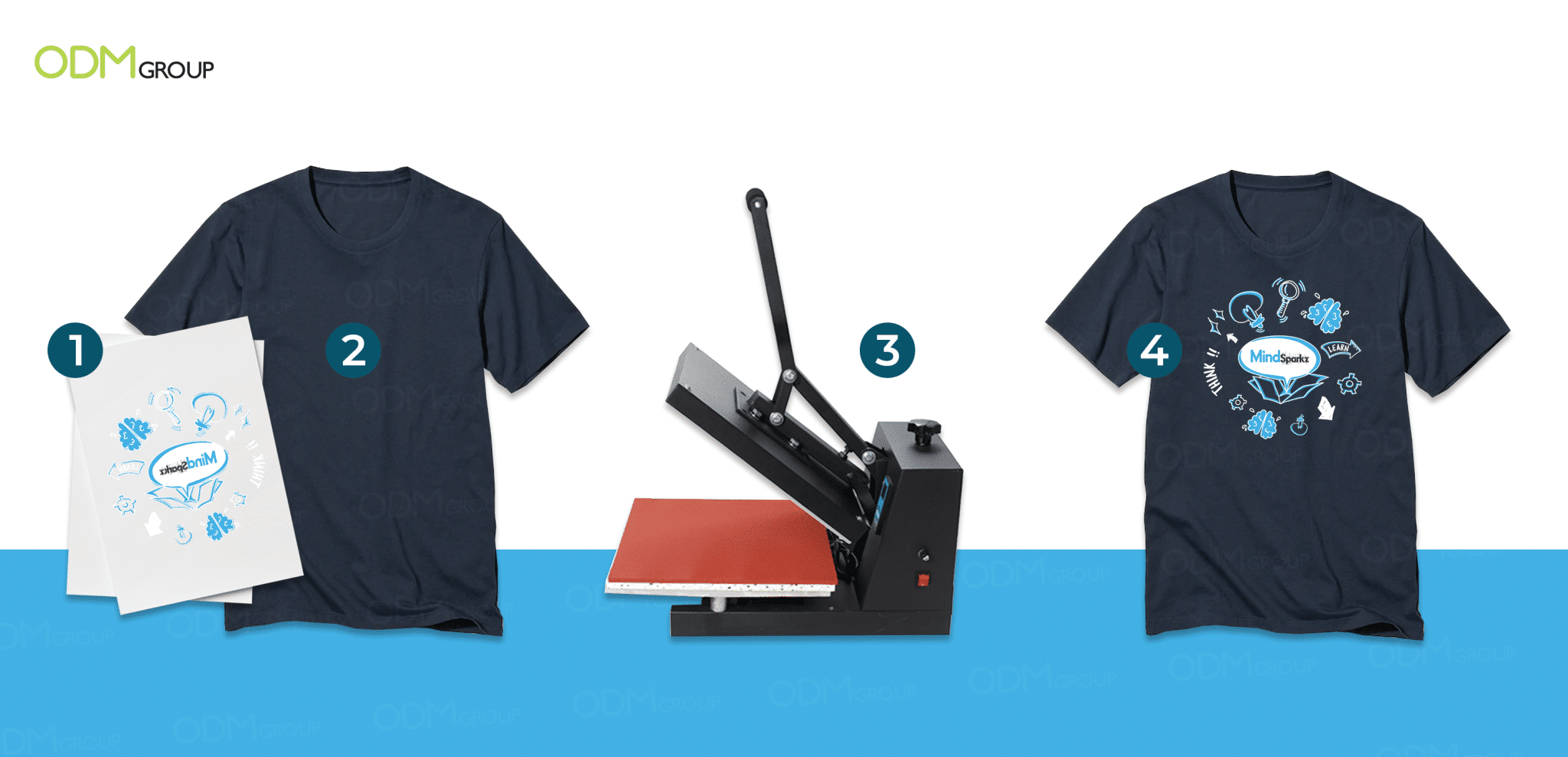
Step 1: Design Preparation
The first step in heat press printing is preparing the design.
This involves creating or selecting the desired artwork, logo, or image that will be transferred onto the promotional product.
Design files are typically created using graphic design software and printed on special heat transfer paper.
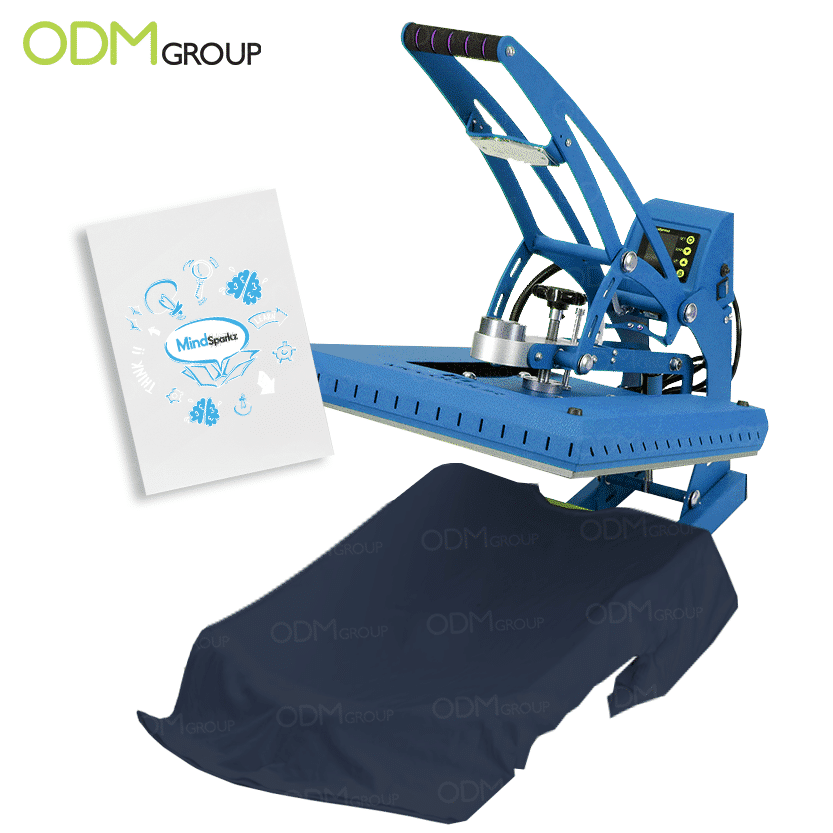
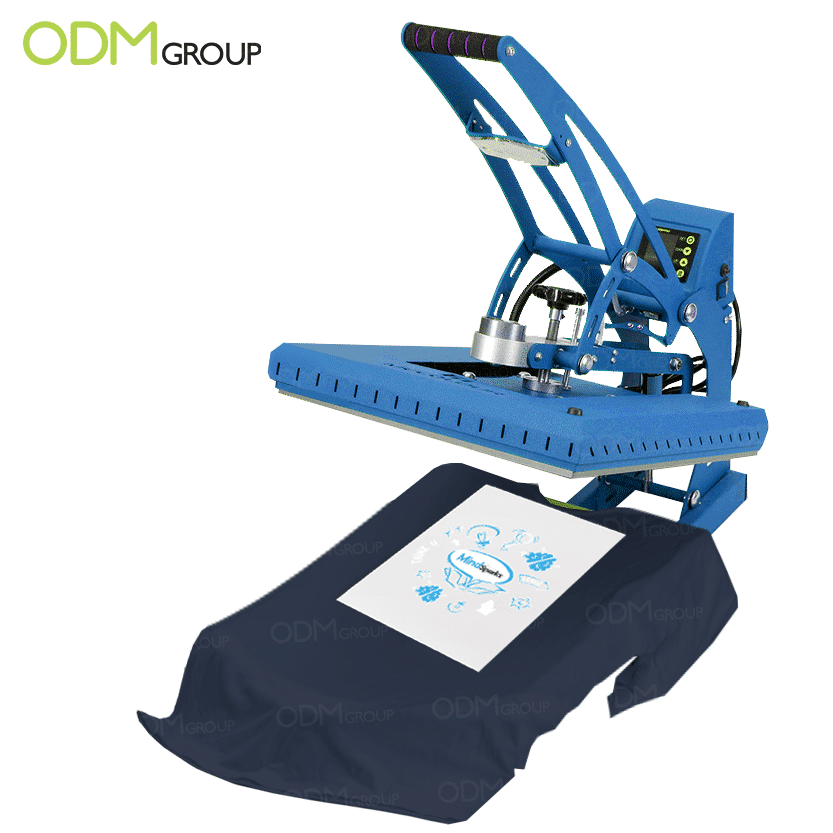
2. Choosing Fabric and Transfer Preparation
Once the design is ready, it’s time to select the fabric to use.
Start by examining the composition of the fabric. Fabrics made from natural fibres like cotton, linen, or silk are typically more suitable for heat press printing.
Before committing to a large-scale heat press printing project, conducting a compatibility test on a small fabric sample is advisable.
3. Positioning and Pressing
With the design transferred onto the heat-transfer material, the next step is positioning it on the promotional product.
The material is carefully placed, ensuring proper alignment and positioning for an accurate and visually appealing result.
Once positioned, the promotional product and heat-transfer material are sandwiched between the heating platen and the press’s lower platen.
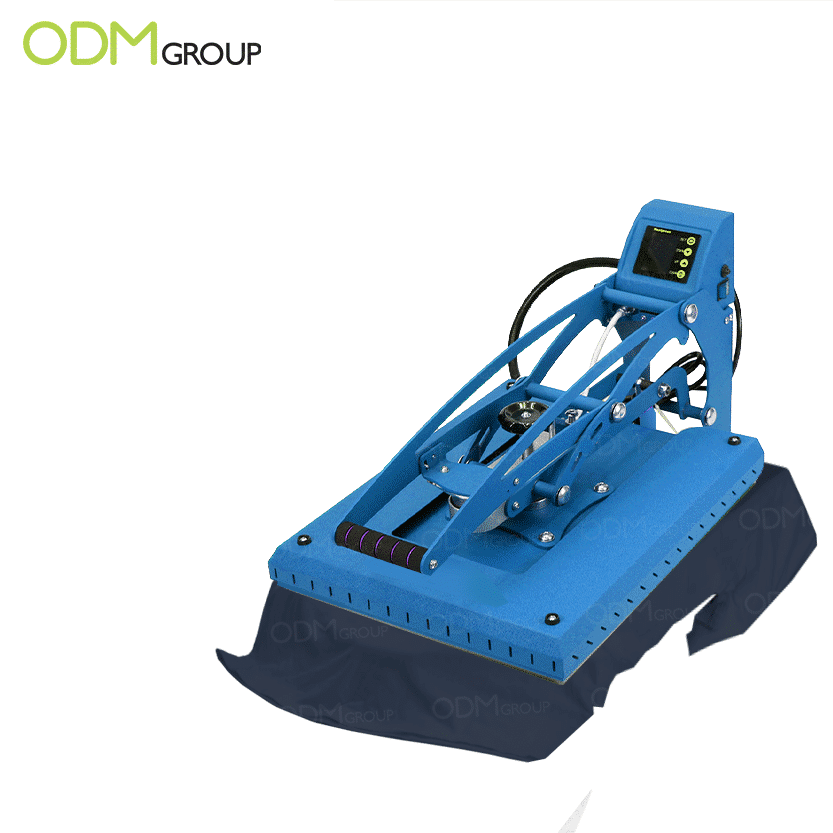
The heat press machine is then activated, applying a combination of heat and pressure onto the design.
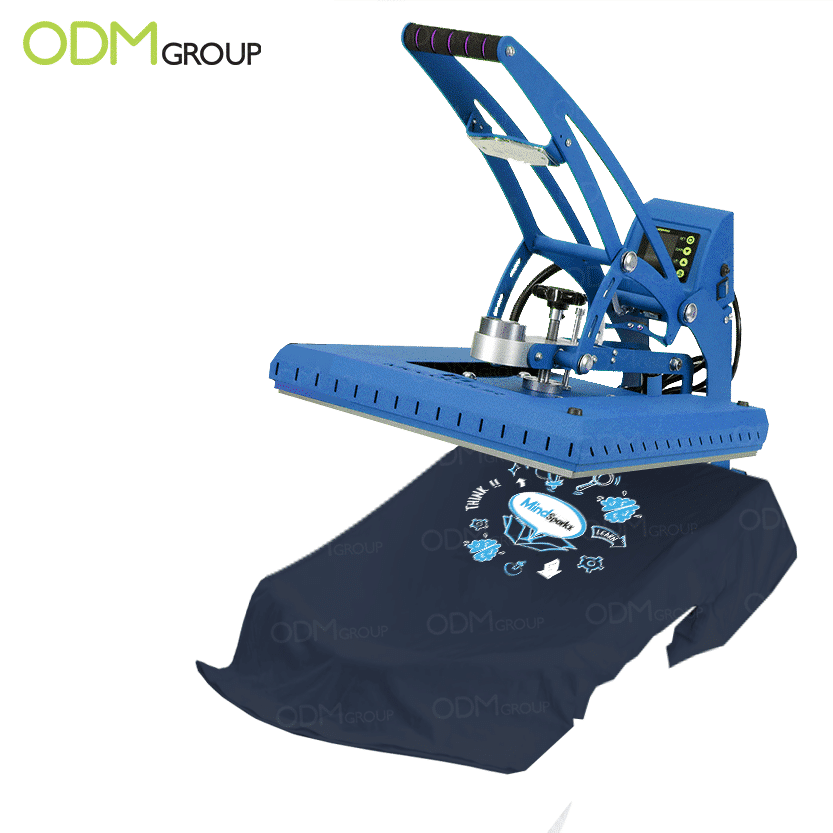
Step 4: Transfer and Finishing
The heat press machine heats the design and substrate, activating the adhesive properties of the heat-transfer material.
As heat and pressure are applied, the ink on the material is transferred onto the surface of the promotional product.
This transfer process ensures the design adheres firmly to the material, creating a durable and long-lasting print.
After the transfer is complete, the heat-transfer material is carefully removed, revealing the final printed design on the promotional product. The product is then allowed to cool, allowing the print to set and ensuring its longevity.
More promotional product branding options:
Lenticular printing is a printing technique that combines two or more images together which can be viewed from different angles. This creates an illusion that the image moves as people view it from different angles.
Supacolour printing is a cutting-edge method that allows for high-quality, vibrant, and durable designs to be transferred onto various surfaces, such as apparel, promotional products, and signage.
Plastisol printing is a branding technique for fabric that uses the same materials and almost similar processes to screen printing. The one key difference between both decoration methods is the ink used for branding and transferring the designed image to the promotional product.
Pad printing is a decorative method on promotional products that utilises a silicone pad to transfer an image to a substrate or an object. It is also known as tampography or tampo printing.
Full colour, also known as 4-colour process printing, is commonly used in offset or digital printing settings. It is perfect for projects requiring printing with full colour photos or designs incorporating multiple colours.
Wrap printing is a decorative process of printing an image, brand name, logo or design on a special kind of vinyl that can be installed on a large surface.
Direct to Garment printing, as the name implies, uses ink to print directly onto the fabric or item of your choice. It absorbs directly into the fabric’s fibres, so you don’t feel the design or ink when you touch it.
Final Thoughts
Heat transfer has rightfully earned its place as one of the most popular printing techniques for promotional products. Its versatility, durability, ability to showcase vibrant colours and fine detailing, and ease of production and cost efficiency, make it an invaluable tool for businesses aiming to make a lasting impact.
By leveraging the power of heat transfer, brands can elevate their promotional product game, leaving a strong and unforgettable impression on their target audience.
Elevate Your Promotional Product Customization with ODM
At ODM, we understand the importance of delivering exceptional quality and meeting your business standards. That’s why we have a dedicated creative team, Mindsparkz, ready to work closely with you. Our team of experts will collaborate with you every step of the way, ensuring top-notch production and consistency in bringing your vision to life.
Harness the power of our creativity and unwavering commitment to drive your business forward. Let ODM be your trusted partner in creating impactful promotional products that captivate your target audience and leave a lasting impression!
Frequently Asked Questions:
What is heat press printing, and how does it work?
Heat press printing is a method of transferring designs onto various materials using a combination of heat and pressure. The process involves placing a heat-transfer vinyl or paper with the desired design onto the material. The material and transfer are then sandwiched between the heating platen and the press's lower platen. When the heat press machine is activated, it applies heat and pressure, allowing the design to transfer from the vinyl or paper onto the material.
What types of materials are suitable for heat press printing?
Heat press printing is compatible with a wide range of materials. Fabrics made from natural fibers like cotton, linen, and silk are popular choices due to their ability to absorb heat and provide a smooth surface for the ink transfer.
How durable are heat press prints, and how do I care for them?
Heat press prints are known for their durability and longevity. When applied correctly, the design forms a strong bond with the material, resulting in prints that can withstand repeated washes, exposure to the elements, and general wear and tear. To ensure the longevity of heat press prints, it's recommended to follow the specific care instructions for the material.






